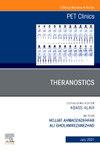Post-Y90 PET Dosimetry
IF 2.3
Q2 RADIOLOGY, NUCLEAR MEDICINE & MEDICAL IMAGING
引用次数: 0
90后PET剂量测定。
经动脉放射栓塞使用钇-90被广泛用于治疗不可切除的肝癌,通过直接向肿瘤输送辐射。而后处理成像通常依赖于单光子发射计算机断层扫描(SPECT)和SPECT/计算机断层扫描(CT),较低的信噪比和空间分辨率限制了其应用。PET/CT和PET/MR成像已被证明提供更有效的图像质量,产生更清晰的图像,用于准确的剂量量化和与治疗反应的相关性。基于pet的成像对于完善个性化剂量测定中的剂量-反应和剂量-毒性关系至关重要,尽管其有限的可用性挑战了其广泛使用。
本文章由计算机程序翻译,如有差异,请以英文原文为准。
求助全文
约1分钟内获得全文
求助全文
来源期刊

PET Clinics
RADIOLOGY, NUCLEAR MEDICINE & MEDICAL IMAGING-
CiteScore
5.70
自引率
3.80%
发文量
78
期刊介绍:
As the clinical applications of positron emission tomography (PET) increase, the new PET Clinics brings together the combined expertise of leading authorities in the field to provide you incisive clinical reviews on advances in the use of PET and combined PET/CT. Published quarterly, PET Clinics provides concise, practical guidance on the clinical issues you face every day. It examines PET is effectiveness in cancer diagnosis and staging, as well as exploring PET is usefulness in the areas of dementia, myocardial viability, and other conditions. Full-color images featured throughout. Topics covered include Breast Cancer, Alzheimer is Disease and Dementia, Lymphoma, Lung Cancer, Cardiology, Pediatric Applications, Infection and Inflammation.
 求助内容:
求助内容: 应助结果提醒方式:
应助结果提醒方式:


